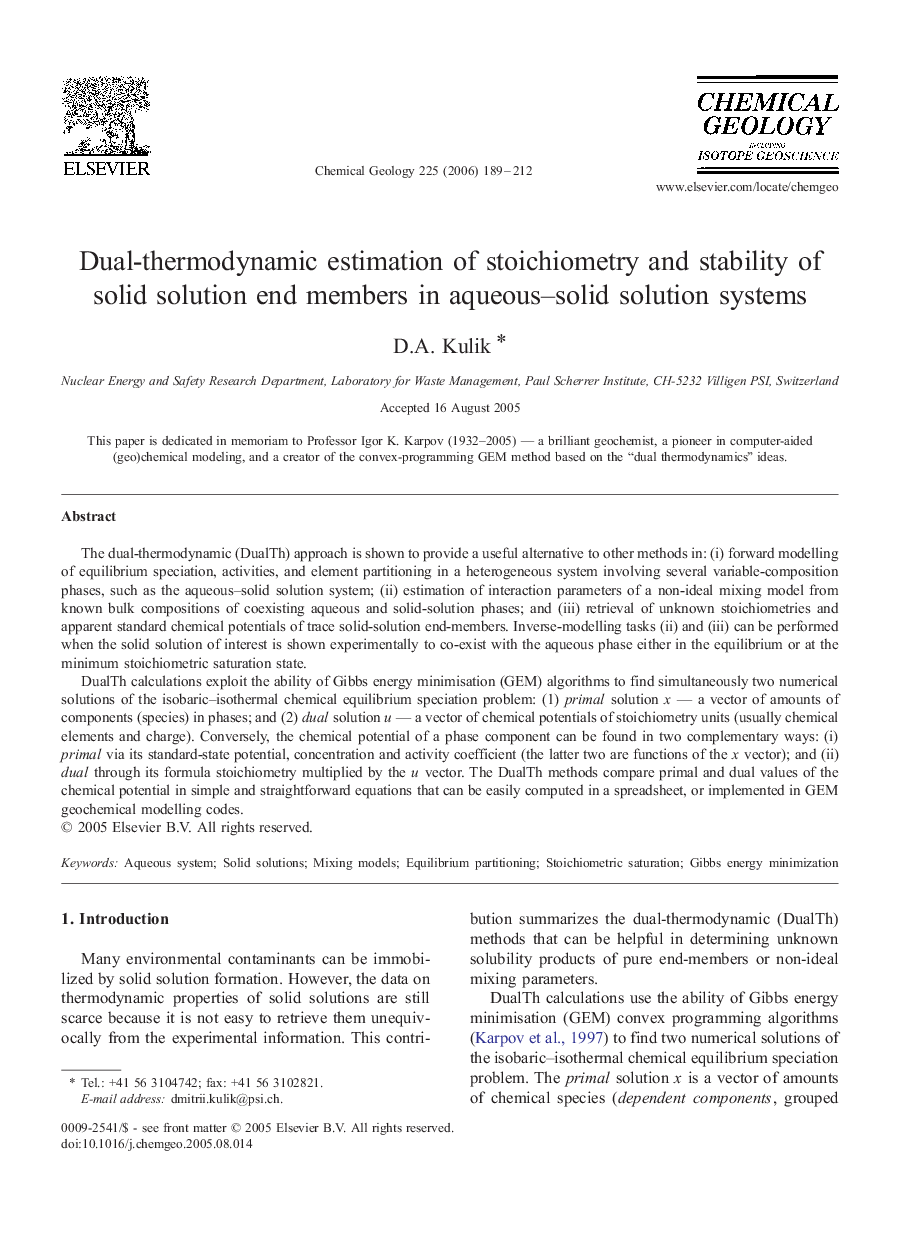| کد مقاله | کد نشریه | سال انتشار | مقاله انگلیسی | نسخه تمام متن |
|---|---|---|---|---|
| 4701291 | 1637776 | 2006 | 24 صفحه PDF | دانلود رایگان |

The dual-thermodynamic (DualTh) approach is shown to provide a useful alternative to other methods in: (i) forward modelling of equilibrium speciation, activities, and element partitioning in a heterogeneous system involving several variable-composition phases, such as the aqueous–solid solution system; (ii) estimation of interaction parameters of a non-ideal mixing model from known bulk compositions of coexisting aqueous and solid-solution phases; and (iii) retrieval of unknown stoichiometries and apparent standard chemical potentials of trace solid-solution end-members. Inverse-modelling tasks (ii) and (iii) can be performed when the solid solution of interest is shown experimentally to co-exist with the aqueous phase either in the equilibrium or at the minimum stoichiometric saturation state.DualTh calculations exploit the ability of Gibbs energy minimisation (GEM) algorithms to find simultaneously two numerical solutions of the isobaric–isothermal chemical equilibrium speciation problem: (1) primal solution x — a vector of amounts of components (species) in phases; and (2) dual solution u — a vector of chemical potentials of stoichiometry units (usually chemical elements and charge). Conversely, the chemical potential of a phase component can be found in two complementary ways: (i) primal via its standard-state potential, concentration and activity coefficient (the latter two are functions of the x vector); and (ii) dual through its formula stoichiometry multiplied by the u vector. The DualTh methods compare primal and dual values of the chemical potential in simple and straightforward equations that can be easily computed in a spreadsheet, or implemented in GEM geochemical modelling codes.
Journal: Chemical Geology - Volume 225, Issues 3–4, 31 January 2006, Pages 189–212